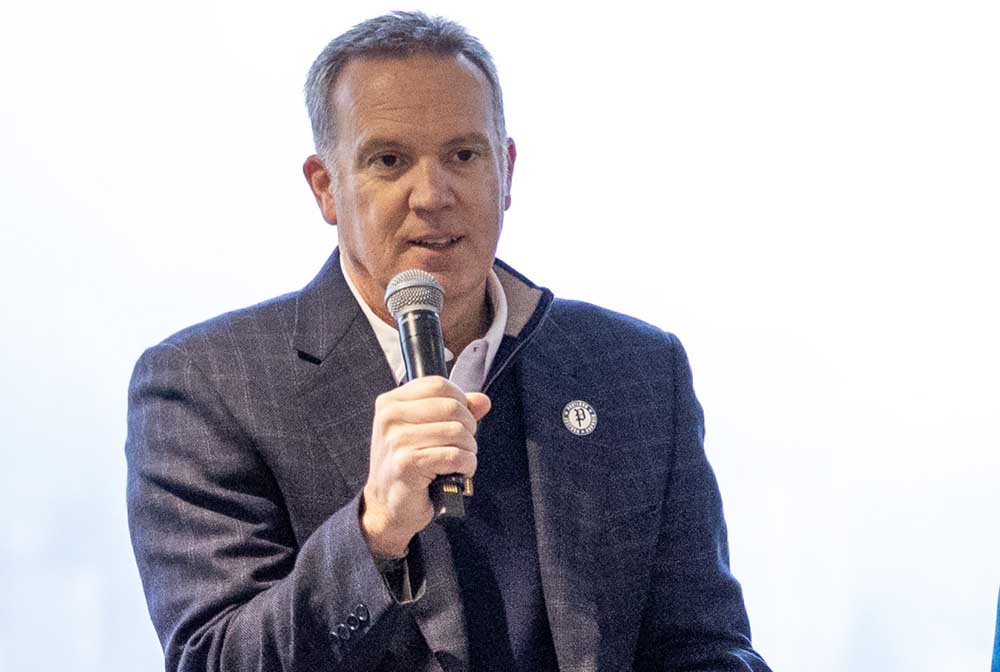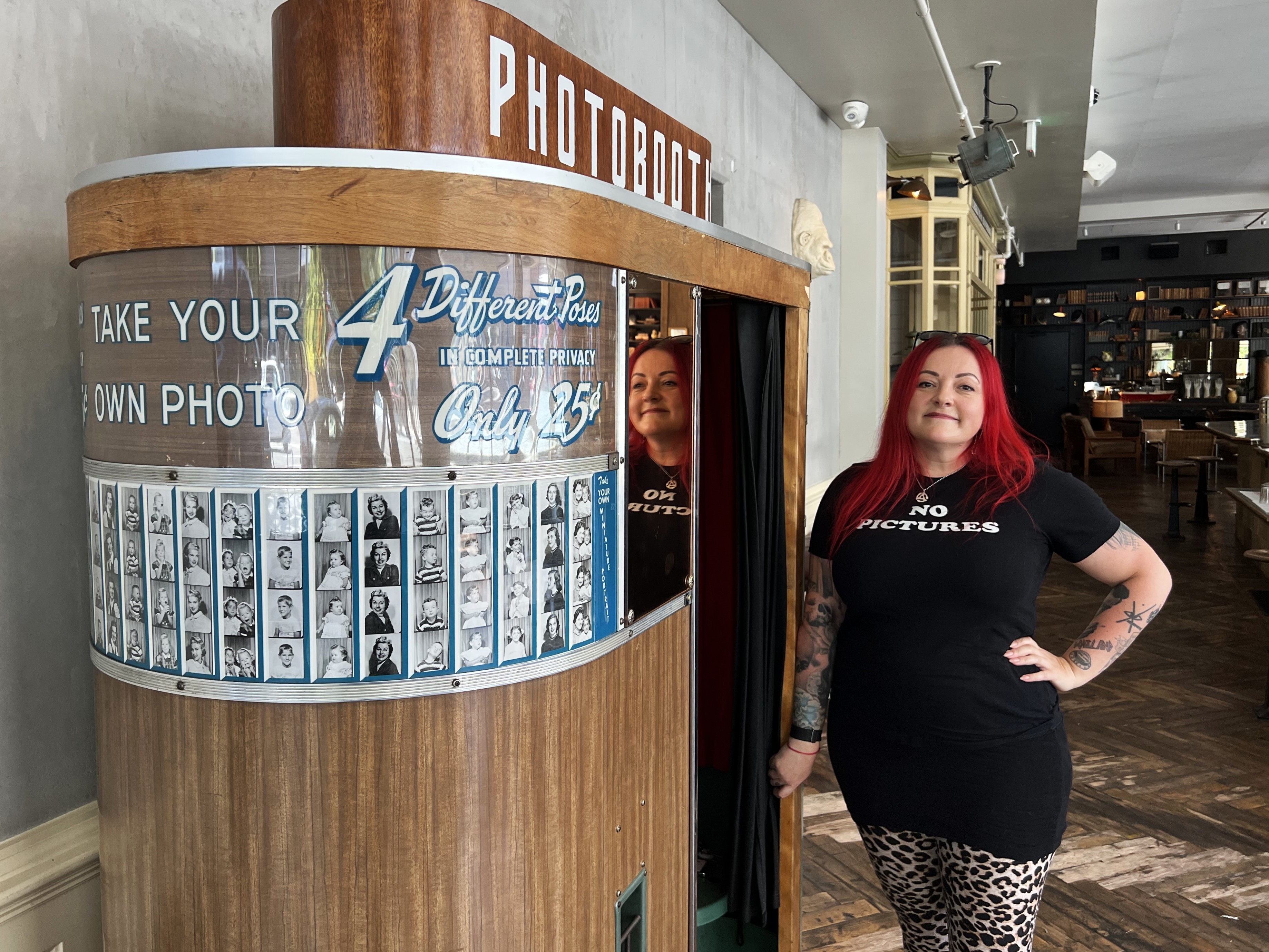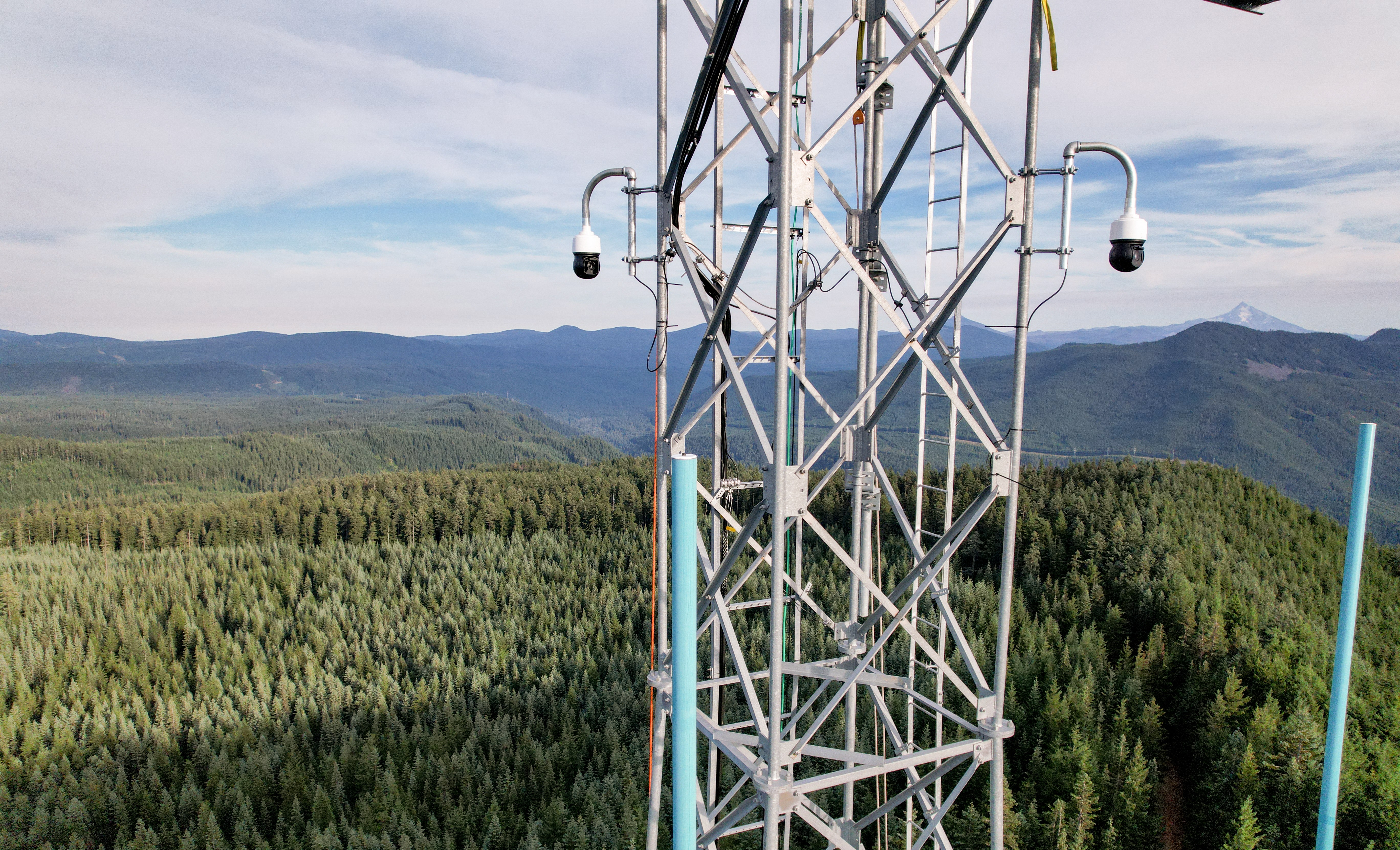‘We got the jewel:’ MLB to Portland forum addresses impact and next steps in pro baseball push
Published 2:41 pm Thursday, January 16, 2025

- Portland Diamond Project Managing Director Mike Barrett speaks at a forum hosted by the Portland Metro Chamber on Jan. 16 at the Hilton Portland Downtown.
The push for MLB to Portland has reached a fever pitch according to Portland Diamond Project managing director Mike Barrett, who spoke on a panel Thursday, Jan. 16, in Portland about the baseball proposal, hosted by the Portland Metro Chamber.
Trending
In September of 2024, the Portland Diamond Project signed a letter of intent to purchase the 30.85 acres of Zidell Yards on the South Waterfront of the city. The group is nearing the end of a 120-day due diligence period and has a 42-month period to complete the purchase.
With the location of a stadium seemingly in place and renderings teased but not released by Barrett on Thursday, the project to bring professional baseball to the Rose City is in a solid spot in leaders’ eyes.
“Zidell Yards is the spot,” Barrett said while recalling the long list of other sites the group publicly studied. “The dream has always been a ballpark on the water. This one solves for that. The Tilikum Crossing is a huge benefit to this ballpark. When you see the renderings, the way we have them with the way the Tilikum Crossing lands at the base of the ballpark, and even integrates into the ballpark on the edge of the water, it’s (something).
Trending
“For all the properties that we were pulling hair out saying, ‘We can’t let this one go.’ Now we know why we let them go, because we got the jewel.”
Baseball impact
The panel at the downtown Hilton hotel discussed the history of the PDP, as well as the potential tourism, sports, labor and overall economic impact a potential MLB team would bring.
The rest of the panel included Megan Conway, CEO of Travel Portland; Jim Etzel, CEO of Sport Oregon; and Graham Trainor, president of Oregon AFL-CIO.
On a tourism front, Conway noted that baseball fans are avid travelers who follow their teams, so creating a new franchise in Portland would see an immediate growth from a population looking to cross off a box on their bucket list.
Conway also pointed to what Travel Portland has seen from the Oregon Ducks moving to the Big Ten at the start of this athletic season back in fall 2024.
With a new conference, new fans have wanted to make the trip to the Pacific Northwest, which includes going through PDX or staying in Portland or more.
“Even though they’re coming to Eugene, a lot of people are staying up here for a longer, extended time and we’re seeing that with our hotel partners and other things,” Conway said. “It’s a good test case as we think about what it looks like to welcome or bring those people to Portland. I would argue that there is no other city in baseball that has quite the Portland personality or flair.”
Barrett said he imagines the team creating a possible ballpark district, referencing the impact seen at other locations like Denver and San Diego having districts for fans to funnel into before and after games.
Conway also touched on the “activation” of downtown Portland through an MLB squad, something she views as critical to getting people to want to spend time in the city.
“Foot traffic in our city is really critical to vibrancy and vibrancy is critical to feeling like a place where people want to spend time, whether it’s living here or visiting here,” Conway said. “If we are able to move in a direction where we’ve got activation in the city center, throughout the city, 81 games a year at least, because we’re going to the playoffs. … When we look at it from that standpoint and just the economic impact that comes from that, we know this is really critical and important from a tourism landscape standpoint.”
As for scratching the itch of sports fans in Oregon, the panel had no worries about the potential attendance, citing teams reaching up to 2.5 million attendees at games over the 2024 season, which is more than the estimated 1.4 million attendees that go to Portland Trail Blazers, Timbers, Thorns and upcoming WNBA games combined, according to Etzel.
“Our teams right now, with the addition of the WNBA, those four teams will bring around 1.4 million fans annually,” Etzel said. “Baseball in Portland, with 81 dates, will easily average 2 million fans, so we’re more than doubling the consumption of sports in the marketplace from a turnstile perspective.”
Barrett also claimed that Portland had the fourth highest TV viewership of the 2024 World Series of the top 22 media markets in the United States, using that as another example of Portland being “baseball hungry.”
Building the stadium
Recently, the Diamond Project received the backing from former Portland Mayor Ted Wheeler, who encouraged the Portland City Council to back the group as well.
The council unanimously agreed on a resolution in October to back the project, which didn’t come with a price tag but did direct city workers to help with the acquisition of Zidell Yards. It also asks workers to look at potential properties and assets owned by the city that could help attract a team to Portland.
And that support is expected to continue with new Mayor Keith Wilson and many other new staffers also expressing their backing to Barrett and the group.
“It was great for us to see that they had, for the first time, formally talked about setting aside time and effort in helping our project succeed,” Barrett said. “We feel great about where we stand.”
Barrett was asked about the potential for infrastructure on the Zidell Yards plot, along with where the potential funding for a stadium might come.
As far as public subsidies, the only one Barrett said the project plans on using is what has become known as a “jock tax.”
States or cities with such a tax use it to require anyone who earns money by their association with a sports team, while visiting the city or state, to pay income taxes despite not living there, but it often is only enforceable for athletes and support staff of the teams as they travel in and out of different cities all the time with a public and easily trackable schedule.
Barrett also was asked about a potential owner, but said he couldn’t disclose the names of the individuals behind the scenes.
“I think (fans should) be comfortable with the notion that we are OK there,” Barrett said. “We wouldn’t have gone this far had it not been, but we can’t disclose it just yet.”
The most recent MLB stadium to be built was Globe Life Field in Arlington, Texas, which came with an estimated $1.2 billion price tag.
Closer to home, T-Mobile Park in Seattle was estimated to cost $517 million back in 1999 when it was completed.
Barrett said a new stadium would likely come with a retractable roof, something he admitted raises the price tag, but is also something the group deems necessary to make it a year-round venue.
“We want it to be a 365 venue, and if we just have an outdoor stadium that sits all winter long, soaking wet with rain and ice on it, it doesn’t do the community any good,” Barrett said. “That’s one huge reason why we have insisted, and it costs a lot of money to add a retractable roof to a ballpark, but we have said since day one (it needs it).”
The panel also discussed their potential partnership with AFL-CIO to be up front and working with the unions of potential staff that a new team would bring, from construction jobs to maintenance to the daily vendors at the games.
With all that being said and plans seemingly coming into place, there is no guarantee MLB will even be looking for new locations.
The league has not officially announced any plans to expand from the 30 teams it currently has, and Las Vegas is expected to be the new home for the Oakland Athletics franchise, which will be playing in Sacramento for at least the next three seasons as Las Vegas looks to build a stadium by Opening Day of 2028.
The Tampa Bay Rays also have been looked at as a team with potential to relocate due to fan attendance, but a completely new stadium district has been proposed in St. Petersberg with some partial bond funding already approved as the two sides look to close the financial gap.
In other words, it’s looking more likely expansion will be Portland’s only way into MLB. And the Rose City has competition with Salt Lake City; Nashville, Tennessee; Charlotte, North Carolina; Raleigh, North Carolina; and Austin, Texas.
The leaders of the Portland Diamond Project and the city said they believe they’ve got a winning ticket, if the time comes.
“We only control this part, we don’t control that part,” Barrett said of MLB’s timeline for possible expansion. “Now, with a piece of land … we’re feeling better than ever and more confident than ever about where we are.”







